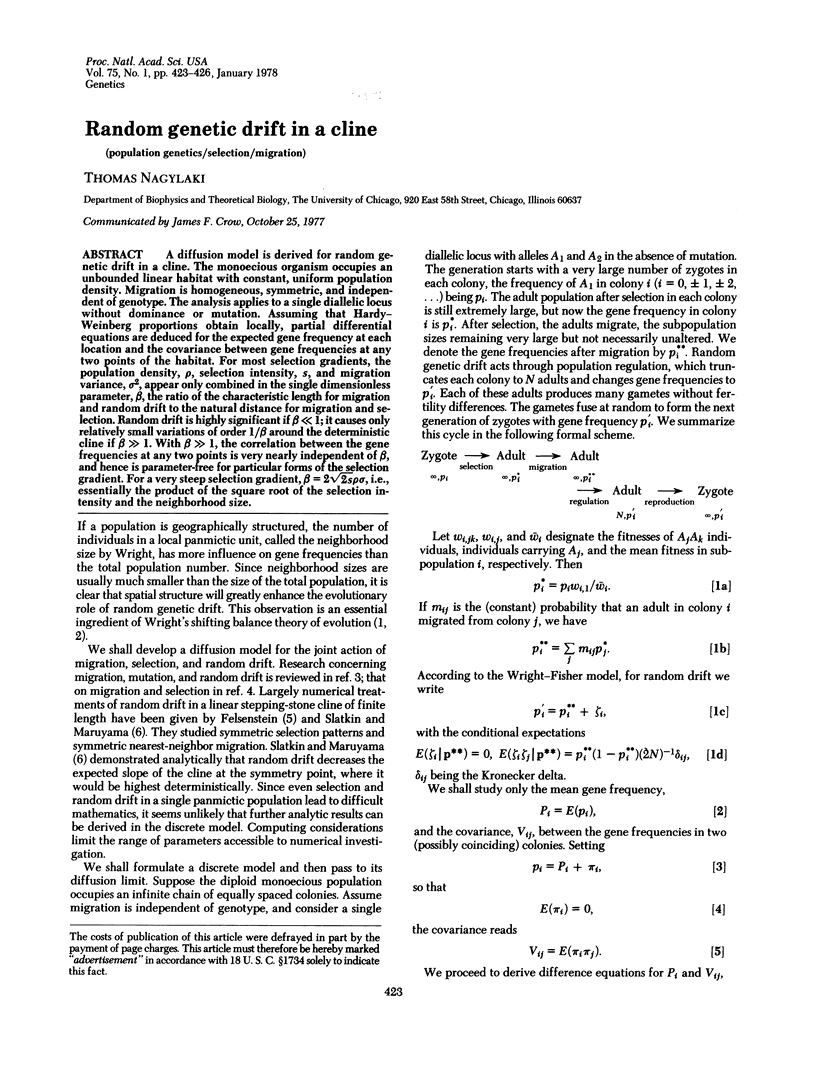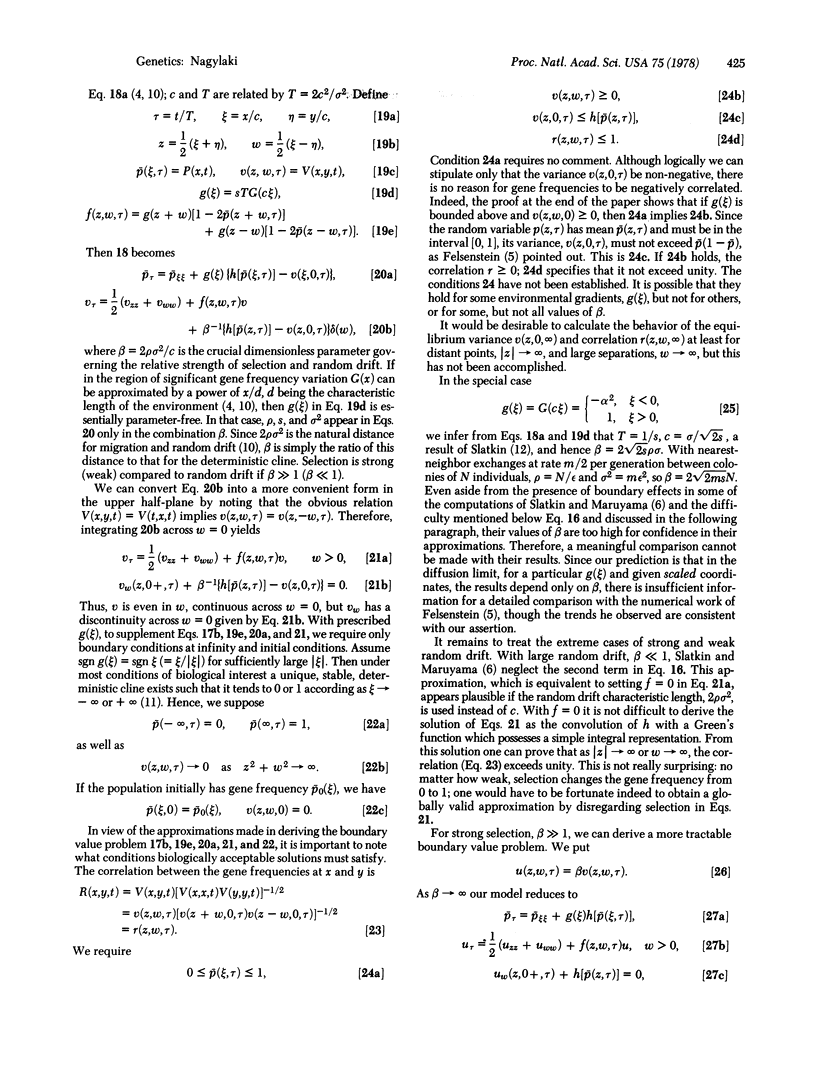Abstract
A diffusion model is derived for random genetic drift in a cline. The monoecious organism occupies an unbounded linear habitat with constant, uniform population density. Migration is homogeneous, symmetric, and independent of genotype. The analysis applies to a single diallelic locus without dominance or mutation. Assuming that Hardy—Weinberg proportions obtain locally, partial differential equations are deduced for the expected gene frequency at each location and the covariance between gene frequencies at any two points of the habitat. For most selection gradients, the population density, ρ, selection intensity, s, and migration variance, σ2, appear only combined in the single dimensionless parameter, β, the ratio of the characteristic length for migration and random drift to the natural distance for migration and selection. Random drift is highly significant if β « 1; it causes only relatively small variations of order 1/β around the deterministic cline if β » 1. With β ≫ 1, the correlation between the gene frequencies at any two points is very nearly independent of β, and hence is parameter-free for particular forms of the selection gradient. For a very steep selection gradient, β = 2 [unk] 2sρσ, i.e., essentially the product of the square root of the selection intensity and the neighborhood size.
Keywords: population genetics, selection, migration
Full text
PDF



Selected References
These references are in PubMed. This may not be the complete list of references from this article.
- Felsenstein J. Genetic drift in clines which are maintained by migration and natural selection. Genetics. 1975 Sep;81(1):191–207. doi: 10.1093/genetics/81.1.191. [DOI] [PMC free article] [PubMed] [Google Scholar]
- Fleming W. H., Su C. H. Some one-dimensional migration models in population genetics theory. Theor Popul Biol. 1974 Jun;5(3):431–449. doi: 10.1016/0040-5809(74)90062-8. [DOI] [PubMed] [Google Scholar]
- Nagylaki T. Decay of genetic variability in geographically structured populations. Proc Natl Acad Sci U S A. 1977 Jun;74(6):2523–2525. doi: 10.1073/pnas.74.6.2523. [DOI] [PMC free article] [PubMed] [Google Scholar]
- Slatkin M. Gene flow and selection in a cline. Genetics. 1973 Dec;75(4):733–756. doi: 10.1093/genetics/75.4.733. [DOI] [PMC free article] [PubMed] [Google Scholar]
- Slatkin M., Maruyama T. Genetic drift in a cline. Genetics. 1975 Sep;81(1):209–222. doi: 10.1093/genetics/81.1.209. [DOI] [PMC free article] [PubMed] [Google Scholar]
- Wright S. Evolution in Mendelian Populations. Genetics. 1931 Mar;16(2):97–159. doi: 10.1093/genetics/16.2.97. [DOI] [PMC free article] [PubMed] [Google Scholar]


